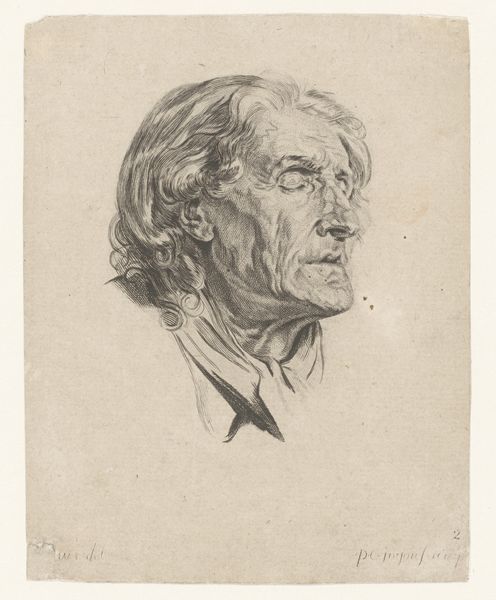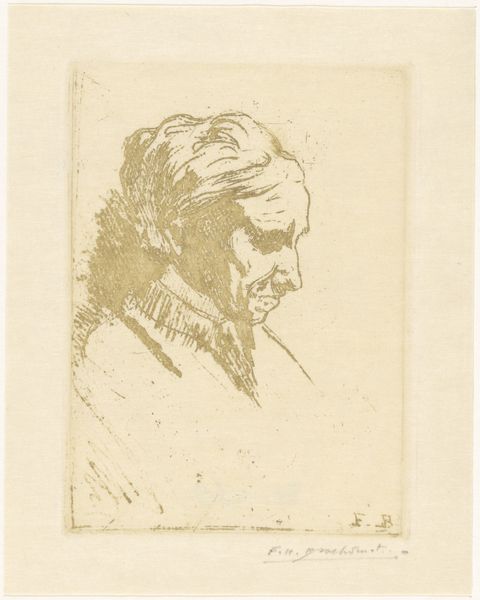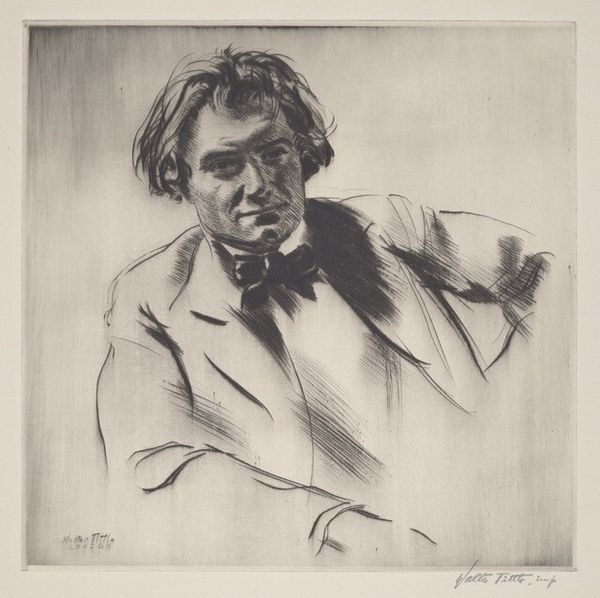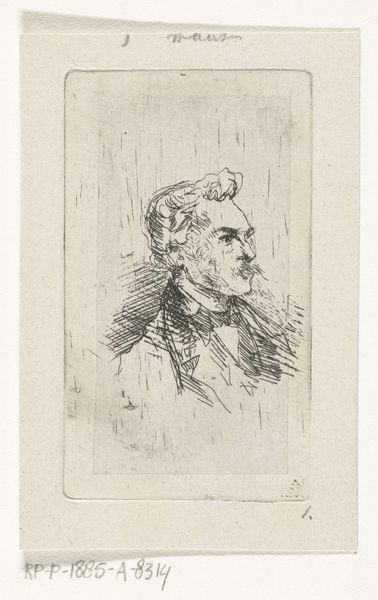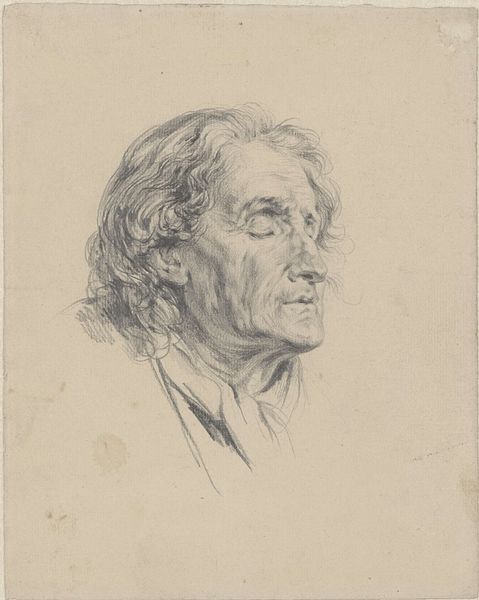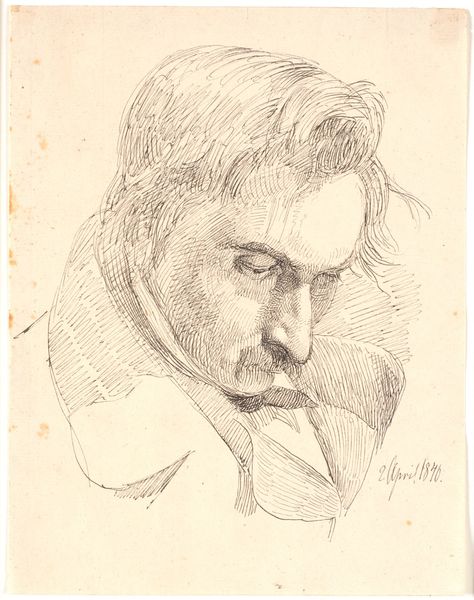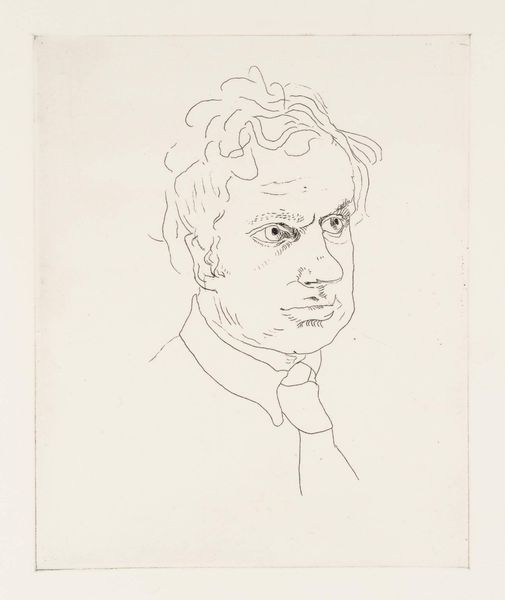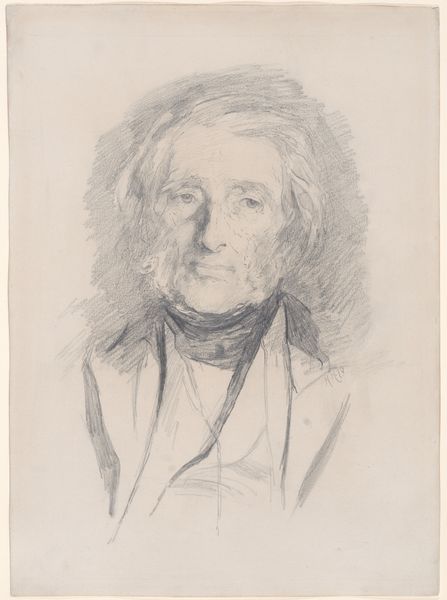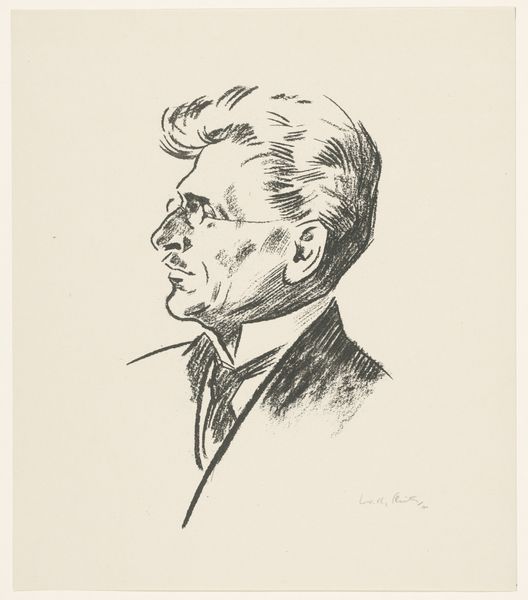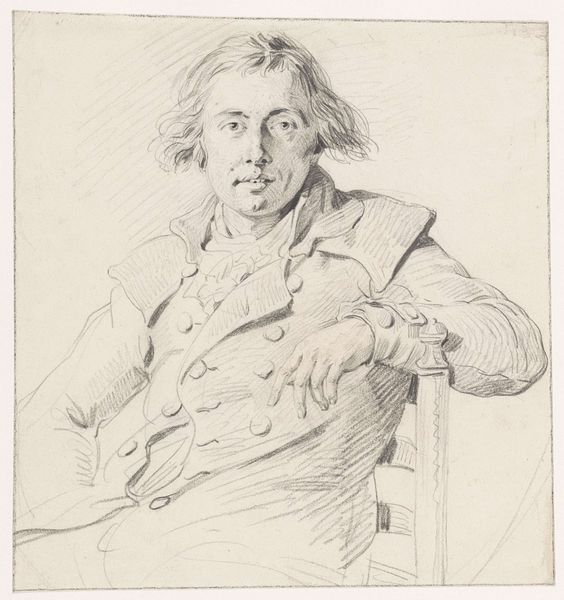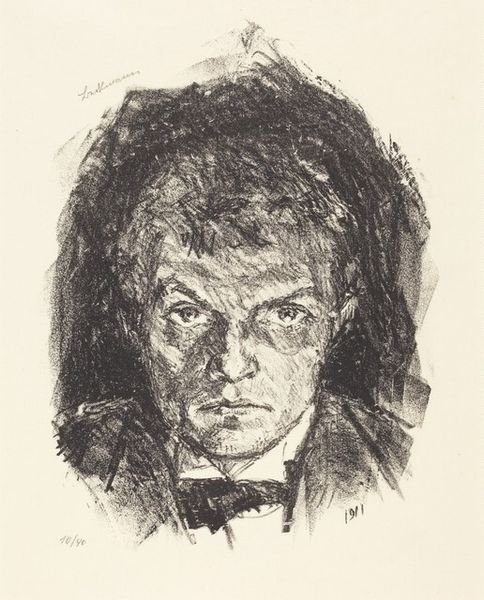
graphic-art, print, etching
#
portrait
#
graphic-art
# print
#
etching
#
portrait drawing
#
realism
Dimensions: plate: 22.86 × 15.24 cm (9 × 6 in.)
Copyright: National Gallery of Art: CC0 1.0
Editor: We are looking at "James McBey", a 1929 etching by Walter Tittle. It’s a very detailed portrait, focusing on the subject's head and shoulders. The fine lines give it almost a photographic realism. What stands out to you in this print? Curator: Considering the period, 1929, and Tittle's identity as a portraitist, it's hard not to see this work within the context of celebrity culture. Etchings like these were often commissioned or produced for a wider audience, serving as a kind of accessible 'high art' representation of notable figures. Does knowing that change how you view it? Editor: Absolutely. Knowing this may have been circulated does give the artwork a sense of the celebrity it aims to capture. Does the identity of James McBey play a role? Curator: McBey, being a well-known etcher himself, creates an interesting dynamic. It’s a portrait of an artist by an artist. I see a play on status, and a conscious artistic dialogue occurring within the work. The social context, where artists were gaining more public recognition, really informs this piece. Are we looking at mere flattery, artistic exchange, or something else? Editor: That's a very insightful take. It's not just about capturing a likeness, but placing McBey within a specific cultural sphere. It also makes me question how much Tittle’s perspective as the artist influences our understanding of McBey’s persona. Curator: Exactly. Whose gaze are we really seeing, and what power dynamics are at play? The institutions that collected and displayed such portraits also reinforced those power structures. Thinking about it this way adds layers to what initially appears as a simple portrait. Editor: I never would have considered that it’s an artist capturing another, also a possible critique of fame, until now! Curator: It prompts us to consider how art can simultaneously celebrate and interrogate its subjects within a broader social and historical framework. Always consider these questions!
Comments
No comments
Be the first to comment and join the conversation on the ultimate creative platform.
